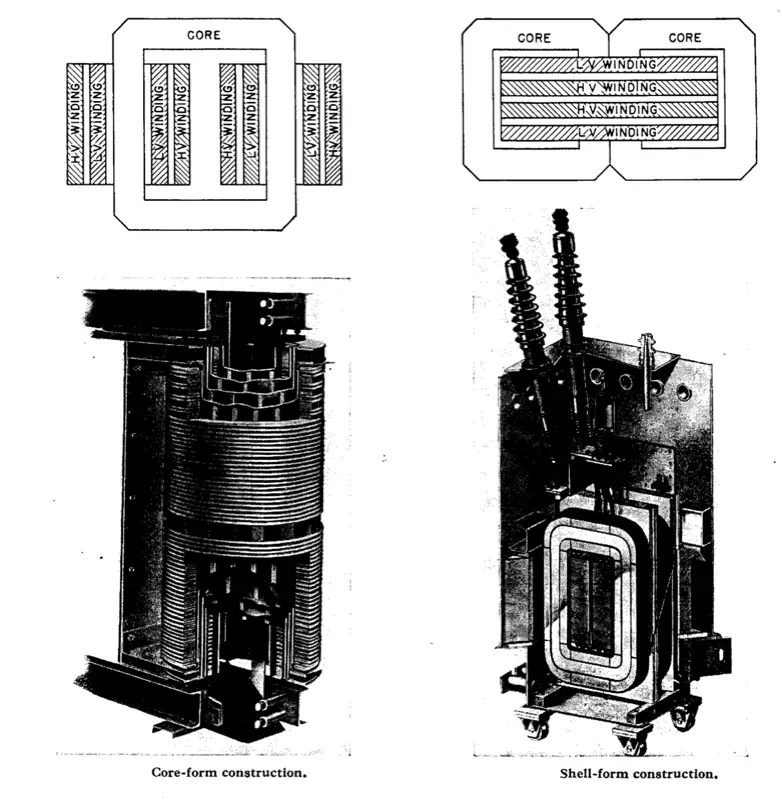Two three phase transformers with ratings shown below are paralleled on their secondary side.
Transformer No. 1 – 1000kVA, 4160V/480V, Z = 5.0%
Transformer No. 2 – 1500kVA, 4160V/480V, Z = 8.0%
The maximum load in kVA the transformers can supply (combined) without overloading any one , is determined by the transformers impedance. They load up inversely proportional to their impedance.
Therefore,
\frac{Load_{T_{1}}}{Load_{T_{2}}} = \frac{Z_{T_{2}}}{Z_{T_{1}}}Before calculating the load, we need to get the transformers on the same base impedance. This can be done using the following formula.
Z_{p.u._{new}}=Z_{p.u._{old}}(\frac{S_{base_{new}}}{S_{base_{old}}})(\frac{V_{base_{old}}}{V_{base_{new}}})^2Changing transformer T1 base impedance to T2 base impedance
X_{t1}= j0.05(\frac{1500}{1000})(\frac{4160}{4160})^2 = j0.075 pu
When transformer T1 is completely loaded to 1000kVA
T2 can be loaded to
Load_{T_{2}}= (1000)(\frac{j0.075}{j0.08}) = 937.5kVA
The total load the transformers can supply combined is
1000kVA + 937.5kVA = 1937.5kVA



Just my opinion, did review the calculation the admin did it right @1937.5 thr transformer will contribute the load inversely proportional to the load. Convert impedance in pu to the second transformer use the relationship S1/S2=ZT2/ZT1. Hope this will help….eealigaen@charter
The very basic condition to load and operate any two transformers in parallel is that both should have equal Impedence value without which as a law of least resistance path one will be more loaded than another one.
The combined MVA would not be the same as you’ve indicated. However, in the real world, transformer T1 will get fully loaded before T2 does. The current always takes the least impedance path, in this case transformer T1. Therefore, In this scenario where you have transformers with unequal impedance with unequal KVA rating is that you cannot connect a load that is equal to combined rating of the two transformers.
When I solve the above problem by transfering the T2 Z to T1 base values, I get below values.
When T2 is completely loaded to 1500 KVA, T1 supplies 1599 KVA (=1500*.0533/.05). Then the total load that can be connected = 2599 KVA, which is not equal to 1937.5 KVA (obtained above). I was expecting both values to be equal irrespective of whether we take first transformer base or second transformer base. Am I missing anything here? Could you please clarify?